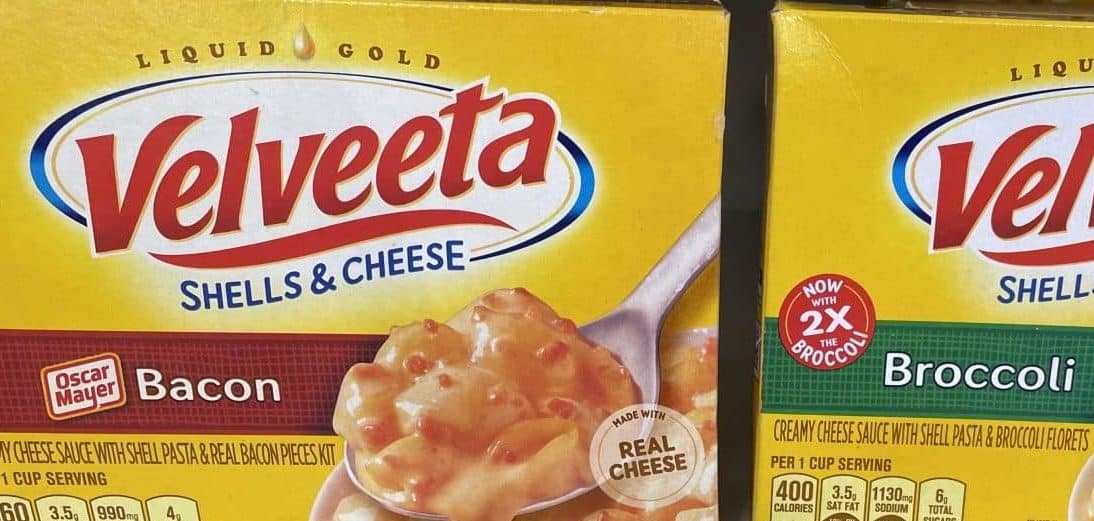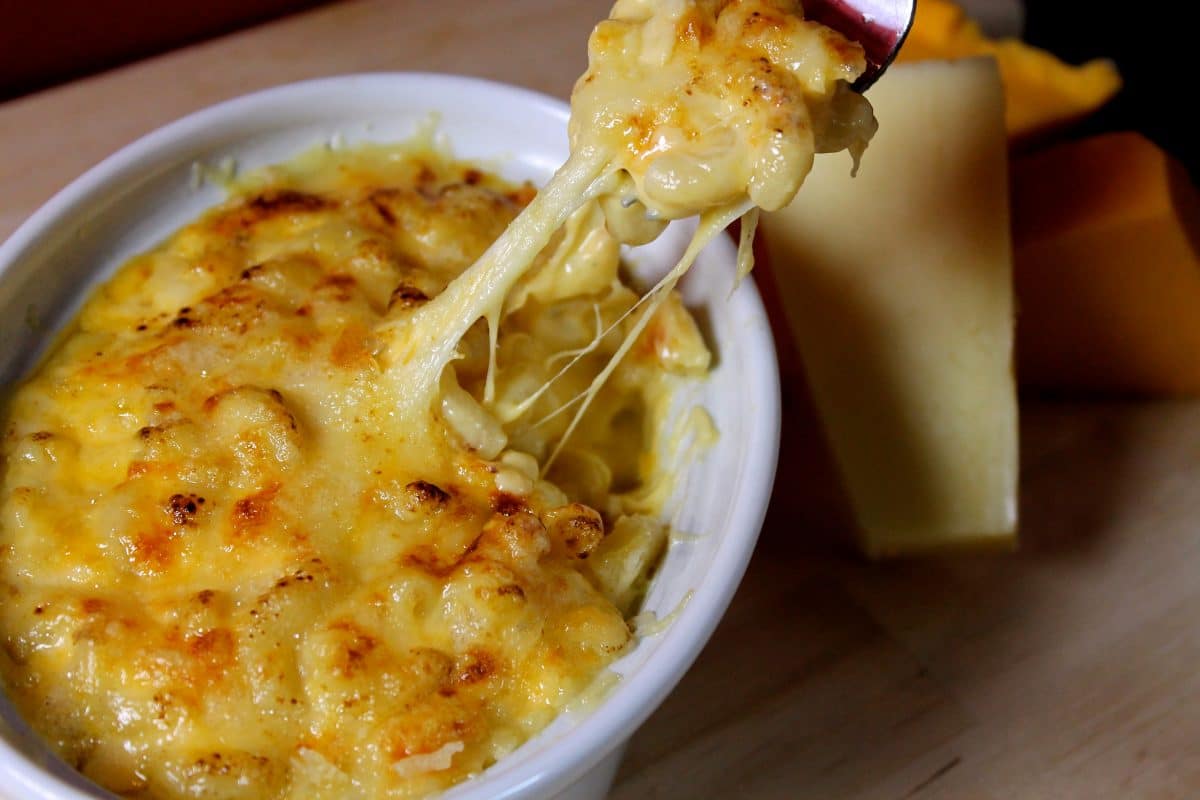A proper gooey, crusty, golden yellow bubbling basin of hot macaroni and cheese is the definition of comfort food.
The persistent popularity of commercially produced macaroni elbows bound by a packet of powdered plasticine has never ceased to amaze.
Long before “pasta e quattro formaggio” became part of the everyday, there was macaroni and cheese. And while many a snooty foodie might not put mac ‘n’ cheese in the same category with other pasta and cheese combinations, I don’t know of one who does not get giddy at the sight of a big pan of home made, not out-of-a-box, elbow macaroni fossilized in a tempting bedrock of rapidly coalescing cheddar cheese. Everyone likes it, especially when it is made by somebody else. For many, however, their first encounter with a made-by-somebody-else mac ‘n’ cheese meant the ubiquitous Kraft dinner.

While the marriage of pasta and cheese may have taken place centuries ago, the benchmark Kraft macaroni and cheese was born in 1937. It all began in St. Louis, Missouri — a town that comes up frequently in the history of foods like hot dogs and ice cream cones. A salesman with the Tenderoni Macaroni Company, in an effort to boost sales, tied a packet of Kraft grated “American” cheese to his box of noodles. When Kraft heard of his audacious marketing scheme they offered him a job. They packaged – pardon the expression – the idea and promoted the concept on the Kraft Music Hall radio show as a “meal for four in nine minutes.” That was a banner year in which Spam was introduced, as was Pepperidge Farm bread, Kix cereal, Ragú spaghetti sauce, Rolo chocolate coated caramels, and Smarties.

The novel, Gone with The Wind was a blockbuster best seller in America in 1937, and nine million boxes of Kraft dinner were sold at “the everyday price of 19 cents.” These days over 300 million units sell nationally every year.
The basic recipe, however, has remained unchanged. This was, and still is, an out-of-a-pot, not baked-in-the-oven, mac ‘n’ cheese. Like Sara Lee chocolate cake, Kraft Macaroni and Cheese has become the benchmark for taste and texture to many. There are variations on the theme. Kraft alone markets three dozen iterations — blue box, microwaveable or frozen, from the original, to triple cheese, Alfredo, cracked black pepper, and southern home style, and a dozen microwaveable Easy Mac & Cheese options for those for whom nine minutes is too long to wait. Annie’s “Home Grown”® has an organic version, as does Horizon®, and Back To Nature®. Not surprisingly, cheese maker Cracker Barrel® has their signature entry. Trader Joe’s has one with elbows, and one with shells. Want it fancy? Roland food sells a truffle version. Lean Cuisine has one; Whole Foods 365 brand has one. Standard standby Stouffer’s has one, and Velveeta® has shells and cheese with 2% milk. The list goes on.
Whatever your choice, the tiny elbow macaroni and salty tang of the bright yellow, slithery sauce is a powerful draw because they all come laced with a good dose of nostalgia.
Editor’s Note
We asked members of The Cook’s Cook Community Forum for their Macaroni and Cheese tips, and the response was overwhelming. It is indeed a beloved comfort food with endless variations.
Béchamel was a base for many recipes. Others recommended making a sauce with heavy cream, sour cream, crème fraiche, chicken or vegetable stock, cream of mushroom soup, evaporated milk, or cottage cheese. Suggestions for add-ins included bacon, broccoli, cauliflower, caramelized onions, roasted tomatoes, roasted poblanos, diced ham, corn, a tube of tomato paste, mustard, nutmeg, Toppings ranged from Rice Krispies to panko. One contributor wrote that his family always ate Mac ‘n’ cheese with a side of canned peaches. Seasonings featured nutmeg, mustard, pepper, garlic, cayenne, dill, paprika and our members shared tips on warming the milk, watching the pot, using a cast iron pan and baking on a pellet grill.
Most importantly, many responded with advice about the cheeses. The consensus was that more is always better, good quality cheese is important, and between three and five are needed. Among the cheese selections were Gruyere, Emmenthaler, Cheddar, Swiss, Parmigiano, Gouda, Bleu, Mozzarella, Pepperjack, (a debated) American, and others.
Chef-writer Patrick Coue wrote from a French perspective about National Macaroni Day and Bastille Day sharing a calendar date: “Every July 14th I storm my cheesemonger for comté, brie and tome de Savoie. Eating non-French cheeses could be considered an act of treason punishable with the guillotine.”
Everyone likes it, especially when it is made by somebody else.
